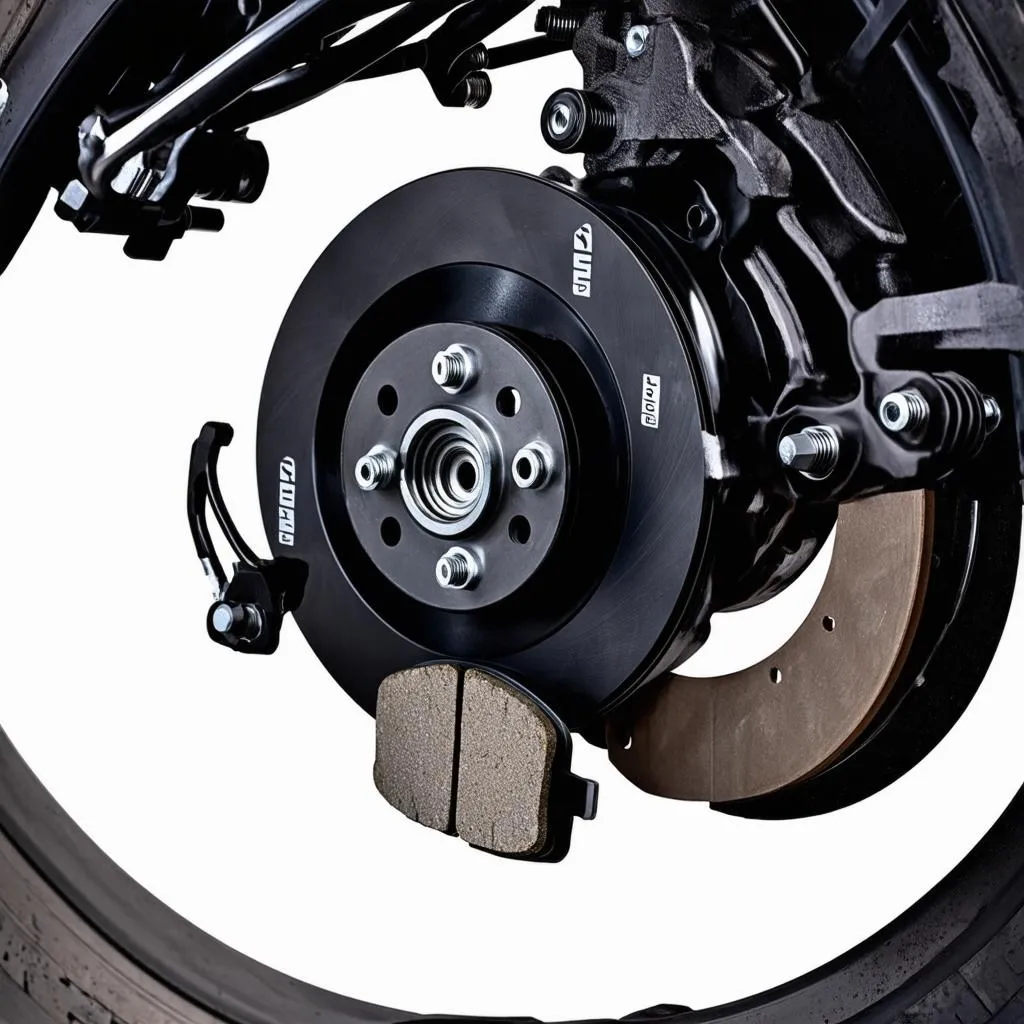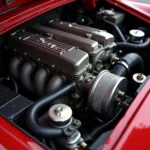A familiar sensation: You’re driving on the highway, and suddenly traffic comes to a standstill. Instinctively, you hit the brakes. But have you ever wondered what happens in your car at that moment? Behind this everyday action lies a sophisticated system – the disc brake.
The disc brake is an essential component of every modern car. It is responsible for safely slowing down and stopping the vehicle. Unlike drum brakes, which were commonly used in older vehicles, disc brakes work with an open brake disc and a caliper.
 Diagram of a car disc brake assembly
Diagram of a car disc brake assembly
How Disc Brakes Work
The operation of a disc brake is fundamentally simple yet highly effective:
- Brake Actuation: When you press the brake pedal, brake fluid is pumped through the brake lines to the brake caliper.
- Piston Movement: Pistons located in the brake caliper are pushed outwards by the pressure of the brake fluid.
- Brake Pads Engage: The pistons press the brake pads against the brake disc from both sides.
- Friction and Deceleration: The friction between the brake pads and the rotating brake disc converts kinetic energy into heat, slowing down the vehicle.
Advantages of Disc Brakes
Disc brakes offer significant advantages compared to drum brakes:
- Better Braking Performance: Disc brakes provide higher and, above all, more consistent braking force, which ensures greater safety, especially at high speeds and in wet conditions.
- Reduced Fading Susceptibility: Disc brakes are less susceptible to fading, meaning that braking performance does not decrease even under heavy use.
- Better Heat Dissipation: Due to their open design, disc brakes can dissipate the heat generated during braking more effectively.
- Less Wear: Disc brakes are characterized by a longer lifespan and lower maintenance requirements.
 Car braking system with visible disc brakes in action
Car braking system with visible disc brakes in action
Maintenance and Wear
Although disc brakes are generally low-maintenance, you should consider a few points:
- Regular Inspection: Have your brakes checked regularly at a workshop, at least once a year or according to the manufacturer’s specifications.
- Brake Fluid Change: The brake fluid should be changed every two years because it is hygroscopic, meaning it absorbs water and loses its braking performance as a result.
- Brake Pad and Disc Replacement: Worn brake pads and discs must be replaced in good time to ensure braking performance and safety.
Frequently Asked Questions About Disc Brakes
- How do I recognize worn brake pads? Squeaking or grinding noises when braking, a longer braking distance, or a pulsating brake pedal can indicate worn brake pads.
- Can I replace the brake pads myself? Changing the brake pads is fundamentally possible, but requires specialist knowledge and special tools. We recommend having the replacement carried out in a specialist workshop.
- What should I consider when buying new brake discs? When buying new brake discs, pay attention to the quality and compatibility with your vehicle model.
Conclusion
The disc brake is a complex and safety-critical component of your car. Regular maintenance and timely replacement of wear parts contribute significantly to your safety and an optimal driving experience.
Do you need support with the maintenance or repair of your disc brakes? Our experts at AutoRepairAid are always available to help you with advice and assistance.
